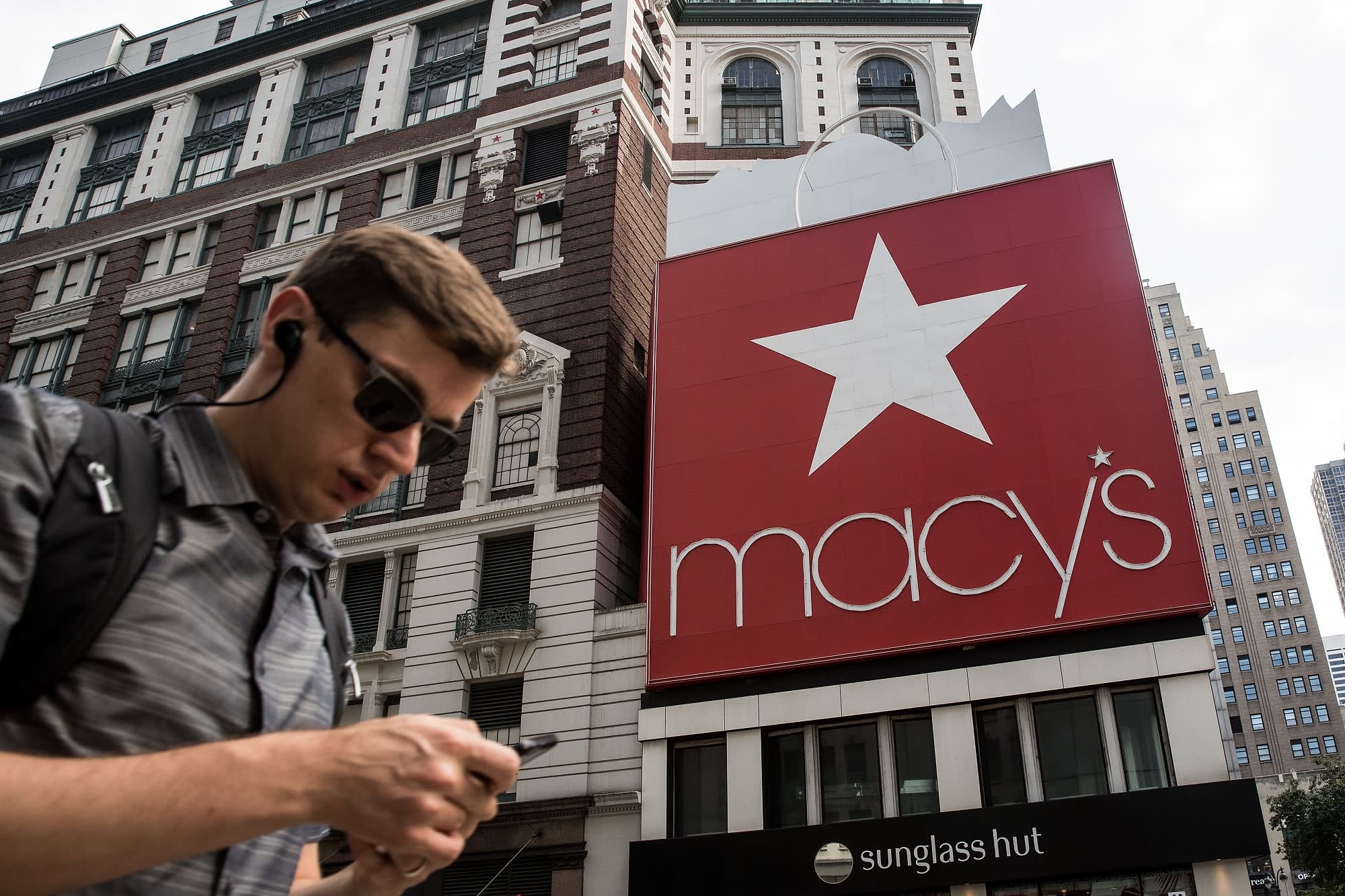Products You May Like
Macy’s isn’t breaking up after all.
On Tuesday, the department store chain affirmed that it will forge ahead as one retailer, despite pressure from activist Jana Partners to split into two entities.
During a call with analysts, Macy’s Chief Executive Jeff Gennette explained that the department store chain had been working closely with advisors to consider a number of scenarios, including Macy’s separating its website from its stores. The conclusion of the review process, he said, was that Macy’s is already on the right track with its turnaround plans and will accelerate those plans even more so in the coming months.
Importantly, Macy’s decision could also have implications for retailers such as Kohl’s, Nordstrom and Dillard’s, which have all been facing similar pressure to break up. Analysts say the appeal of an e-commerce spinoff, similar to what Saks Fifth Avenue did early last year, is waning fast as shoppers head back to stores and online-only entities incur heftier expenses to acquire customers and to handle shipping and returns.
Gennette gave four key reasons as to why Macy’s decided not to spin off its e-commerce arm. One is that Macy’s isn’t currently constrained for capital to invest in its business. Second is that a breakup would come with high separation costs, he said. Third is that running two separate businesses would come with heightened ongoing expenses. And lastly, according to Gennette, is the risk that a breakup could deter customers from shopping the Macy’s brand.
“In every alternative scenario we considered, the execution risk for the business and our customers was too high,” the CEO said. “We determined that Macy’s has a stronger future as a fully integrated business … with Macy’s and Bloomingdale’s together with a broad range of brands, price points and customers across digital and stores.”
Macy’s Chief Financial Officer Adrian Mitchell echoed this sentiment on the earnings conference call and said that Macy’s long-term strategy is durable. “It’s important to acknowledge that today we’re in just a much different competitive position than we were even just two years ago,” he said.
In turn, Macy’s says it will ramp up plans to open additional small-format stores and create more of its own private labels. It also has been working on a digital marketplace that’s expected to debut later this year.
Jefferies analyst Stephanie Wissink said it isn’t a big surprise that Macy’s rejected the idea of splitting online from stores. Activist heat has cooled off in recent months, she said, and the risks of a breakup was too high for Macy’s.
Jana had slashed its holdings in Macy’s by 84% in the last months of 2021, according to a regulatory filing, following its push in October for the retailer to break up. Jana didn’t give a reason for the selling at the time.
A representative for Jana didn’t immediately respond to CNBC’s request for comment.
GlobalData Retail Managing Director Neil Saunders added about Macy’s that, “Management knows that stores and online are part of the same ecosystem and that the business works best when both are fully aligned and part of the same entity.”
“What is in the interest of Wall Street investors making short term gains, is not necessarily in the interest of the long-term health of the company,” Saunders added.
To be sure, he noted that Macy’s is resisting the urge to split from a position of strength, on the heels of its better-than-expected results for the fiscal fourth quarter. Kohl’s and Nordstrom are not performing as well, Saunders said, which could make it all the more difficult for them to dismiss calls from investors who are looking to make changes.
Nordstrom is said to be working with AlixPartners to review a potential spinoff of its off-price division, Nordstrom Rack. Kohl’s, meantime, has seen pressure from activists to pursue a spinoff of its online division similar to Saks. Kohl’s has also come under pressure to consider an outright sale.
Both Kohl’s and Nordstrom are expected to report quarterly results next Tuesday.
Though Saks and now Saks.com are two privately held entities, management has been very public about the appeal of a split, particularly in the luxury segment.
Run by President Larry Bruce, Saks stores are still entirely owned by HBC. Saks’ digital unit, however, received an investment from the venture capital firm Insight Partners, which now has a minority stake in the business. Marc Metrick, formerly chief executive officer of the combined Saks businesses, leads the digital side.
Under Metrick, Saks.com was reportedly preparing for an initial public offering, targeting the first half of this year. But it’s unclear if that timeline has changed at all, or if those plans are still on the table.
A representative from Saks didn’t immediately respond to CNBC’s request for comment.
Macy’s shares climbed more than 8% in early trading Tuesday, as the department store chain issued an upbeat outlook for 2022. The stock is up more than 80% over the past 12 months.
Kohl’s is up just 2% over the same period, while Nordstrom has dropped 42%. Dillard’s has surged 210% over the past 12 months.
